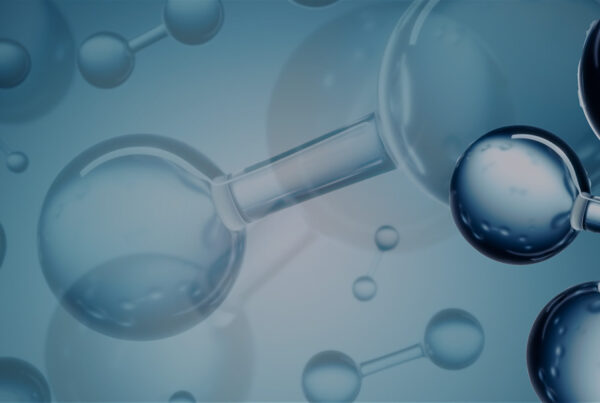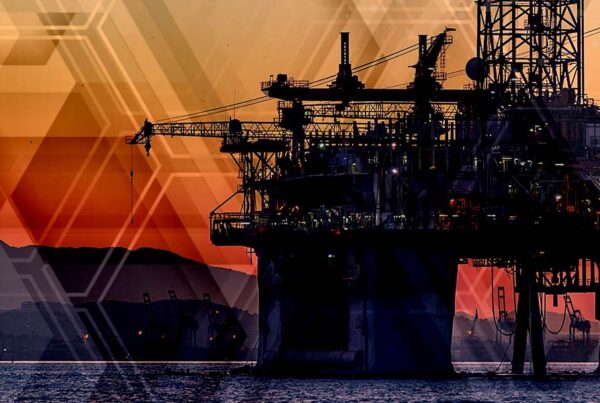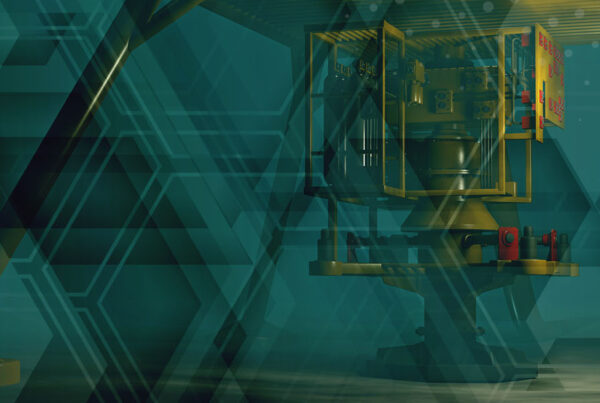OCTOBER 2024
The European hydrogen market emerged from the summer months with significant developments during September in both CCS-enabled and electrolytic hydrogen production pathways. Major CCS-enabled production and infrastructure projects were cancelled, while others showed more positive signs, and the EU’s long-awaited low-carbon hydrogen standard was published – offering more, but likely still insufficient levels of certainty. In contrast, the electrolytic hydrogen market saw positive movement aimed at bolstering growth. This was despite concerns raised over the stringency of the current rules to produce renewable hydrogen, as well as in the terms published for the next European Hydrogen Bank auction. This divergence highlights the ongoing evolution of the hydrogen market in Europe, where regulation and policy are continuing to shape its development.
Conflicting movements for CCS-enabled hydrogen
Major project cancellations
In the final week of September, a series of unexpected announcements cast doubt on the future of CCS-enabled hydrogen production in Norway. Equinor and RWE cancelled their ambitious plan to build a hydrogen pipeline between Norway and Germany. The project, announced in January 2023, aimed to export up to 10GW of CCS-enabled and electrolytic hydrogen annually from their joint ‘Clean Hydrogen to Europe’[1] project to European consumers and to supply RWE’s planned ‘hydrogen-ready’ gas-fired power plants in Northern Germany. Equinor cited high costs and insufficient demand for the cancellation. With pipeline construction projected to cost €3bn and total investments reaching tens of billions, the project was deemed economically unfeasible, especially without long-term offtake agreements from European buyers. The situation is particularly concerning given that RWE was set to be a principle offtaker for the project, with additional offtake opportunities anticipated from the upcoming 12.5GW tender process for ‘hydrogen-ready’ power plants scheduled for early next year.
Notably, Equinor and RWE signed a new supply agreement in October 2023 for 1-1.5bcm of natural gas per year until 2028. RWE still plans to develop their 3GW of ‘hydrogen-ready’ power plants by the end of the decade, signalling a stronger focus on natural gas as a way forward. This highlights the ongoing challenges in making hydrogen production and related offtake contracts financially viable, particularly when factoring in the added cost of pipeline construction and transport.
A day following Equinor’s press release, Shell announced the cancellation of its Aukra Hydrogen Hub project at the Nyhamna gas processing plant in Norway, citing low demand and inadequate market conditions[2]. The 1.8GW (LHV) project, to be developed with Aker Horizons and CapeOmega, aimed to produce 1,200 tonnes of CCS-enabled hydrogen daily by 2031. Shell and Aker Horizons attributed the decision to the lack of a strong regulatory framework and long-term policy incentives, particularly compared to electrolytic renewable hydrogen. As a result, Aker Horizons plans to shift focus towards electrolytic hydrogen projects and ammonia as an energy carrier.
Some positive signals
Amid the cancellations of two major Norwegian projects, Leiv Kallestad, co-CEO of Horisont Energi, reaffirmed the company’s optimism about CCS-enabled hydrogen. He stated in late September that their 735MW (LHV) Barents Blue project, due to be operational in 2029, is still progressing despite facing challenges such as a delayed final investment decision (FID) until 2026. Kallestad highlighted the scaling potential of CSS-enabled hydrogen, which currently outpaces electrolytic hydrogen projects, as a key factor in its current market viability. Additionally, Horisont Energi has secured ammonia offtake agreements and received NOK 482mn in funding from ENOVA under the IPCEI Hydrogen programme, ensuring the project continues to progress.
Further support for CCS-enabled hydrogen comes from the completion of the Northern Lights CO2 transport and storage facility, a joint venture (JV) between Equinor, Shell, and TotalEnergies. Officially opened in Øygarden, Norway, on 26 September, the facility is part of Norway’s Longship CCS initiative, which aims to decarbonise European industries by capturing CO2 emissions, transporting them via LNG-powered carriers, and storing them in the North Sea seabed. With a capacity of 1.5 MTPA already fully booked and plans to expand to 5 MTPA in Phase 2, this facility could play a significant role in enabling the growth of CCS-enabled hydrogen project by providing the necessary infrastructure to handle large-scale CO2 storage.
Too little too late for policy?
As with the wider European hydrogen market, timing and pace remain significant challenges. Just days after the cancellations mentioned previously, where insufficient regulations were a central concern, the European Commission released a draft Delegated Act on ‘low-carbon hydrogen’. It clarifies the methodology for calculating emissions from low-carbon gases, including hydrogen, which must be 70% lower than those of fossil-based production. Although the EU’s Hydrogen and Low-carbon Gas Markets Package, published in July, lacked specific guidelines on emissions calculations, this new draft offers clearer direction for project developers. It remains open for consultation until 25 October, with finalised rules expected by the end of the year. Without greater regulatory certainty, we could see further cancellations as developers remain hesitant amid ongoing policy uncertainty.
Electrolytic hydrogen development receives further support
Policy support
In early September, the European Commission introduced new guidelines requiring the 27 EU members sates to implement incentives to meet the 42% target for RFNBO[3] hydrogen use in industry[4] by 2030, set through REDIII[5]. The guidelines state that the measures should be tailored to each country’s circumstances and clarify that the target applies to member states rather than directly to hydrogen consumers. While member states have been encouraged to establish mandatory quotas for RFNBO use, it was made clear that they should consider providing regulatory support to address cost disparities between RFNBOs and fossil-based hydrogen to ensure targets are met. In addition, the guidelines clarify that hydrogen used in refineries can count toward either industry or renewable transport targets, although hydrogen used for electricity generation or steam production is excluded.
The European Commission’s technical approval of CertifHy, the Clean Hydrogen Partnership’s renewable hydrogen verification programme, marks a notable step in advancing regulatory frameworks for hydrogen in Europe. CertifHy, which has operated a voluntary verification programme since 2014, applied for formal recognition in March 2023 and is now awaiting final accreditation, anticipated by the end of the year. Alongside CertifHy, two other certification bodies, ISCC EU and REDcert, have also received pre-certification status to validate RFNBOs. These developments signal growing regulatory certainty, which will be crucial to drive forward hydrogen project development and investments. With clearer standards in place, developers, technology providers and offtakers will gain much-needed certainty about their project’s compliance with strict EU regulations. This clarity is essential for advancing hydrogen projects, but any delays in the approval process could hinder an industry already struggling with regulatory uncertainty and slow progress.
Calls for leniency
German Vice-Chancellor Robert Habeck, supported by trade association Hydrogen Europe, called for a postponement of the EU’s strict rules[6] on renewable hydrogen production to reduce costs and enable the market to develop. In his letter to the EU, Habeck argued that these rules are overly stringent and are slowing the development of renewable hydrogen projects in Germany and other EU member states, raising the production cost by around €2.40/kg of hydrogen. He suggests delaying the implementation of these rules from 2028 to 2035 to give companies more time to develop the hydrogen market. The IEA also openly criticised the rules, yet considering the long process to reach approval last year, it appears unlikely that the legislation will be redrafted given its recent approval.
‘Domestic’ funding support
The EU announced the final terms and conditions for the second European Hydrogen Bank (EHB) auction, allocating €1.2bn to electrolytic hydrogen production projects. The auction, expected by the end of the year, will divide the funds into two pots: €1bn for projects targeting any end-use demand sector, and €200mn specifically for maritime projects to support compliance with the FuelEU directive[7].
A notable change in this auction is the lower ceiling price of €4/kg, down from €4.5/kg in the first round. This marks a change from the initially proposed €3.5/kg ceiling in the draft rules – perhaps a move to attract more bids. Projects must be operational within five years of receiving the award and reach FID within 2.5 years of signing the grant agreement.
A new requirement stipulates that no more than 25% of electrolyser stacks can be sourced from China. This follows an open letter from European electrolyser manufacturers to the EU Commission in July to provide protection against Chinese electrolyser manufacturers. Nonetheless, the restriction only applies to electrolysers manufactured in China, opening the door for Chinese companies developing manufacturing facilities in other countries. Notably Hygreen Energy and Envision have recently announced commitments to develop large-scale facilities in Spain.
Similar calls for domestic support have been made in the UK, with Hydrogen UK[8] advocating for a minimum threshold of domestically manufactured technology to access subsidies.
Many European electrolyser manufacturers support this move, however some worry it could slow hydrogen project development if production costs remain high. Key stakeholders, including Germany’s Ministry for Economic Affairs and Climate Action, RWE and Engie, have cautioned that even reaching €5/kg by 2030 could be challenging[9]. Many European developers, including Tree Energy Solutions and Madoqua Renewable, are already looking to China to source cheap electrolysers. The new restrictions may discourage other developers from applying for subsidies in the second auction round, especially as developers were able to secure low winning bids in the first EHB auction potentially supported by the reliance on cost-effective Chinese technology.
Key European Project Watch
Key project announcements and developments in September
| Project | Update |
| Cobra Cartagena and Castellon | Spain has granted a €150mn subsidy to Cobra Instalaciones y Servicios (Cobra IS), a subsidiary of French company Vinci, to support its Green Cobra project focused on developing a complete renewable hydrogen supply chain in Spain, including production, storage, transportation and distribution. The project was previously designated an Important Project of Common European Interest (IPCEI) by the EU in October 2022, with an initial approval for €220mn in funding. The project will include two electrolysers, one located in each of Castellón and Cartagena, with a combined capacity of 205MW, aiming to produce 8,500 tonnes of green hydrogen annually for hard-to-abate sectors like refining and ceramics. The reasons for the reduced funding from the originally approved amount are unclear. |
| VVR Green | The VVR Green renewable hydrogen production project by DH2 Energy has received Potential National Interest (PIN) status from the Portuguese Agency for Investment and Foreign Trade (AICEP), recognising it as a significant investment for Portugal due to its economic benefits and positive impact. Located in Vila Velha de Ródão, Castelo Branco, the project will start with a 35MW electrolyser powered by a 49MWp solar photovoltaic plant, with plans to expand to 75MW and 100MWp, respectively in a second phase. |
| Hamburg Green Hydrogen Hub | Hamburg Green Hydrogen Hub (HGHH), a JV between Luxcara and Hamburger Energiewerke, has awarded Siemens Energy a contract to supply HGHH with a 100MW PEM electrolyser at the site of the former coal power plant in Hamburg-Moorburg which closed in July 2021. The 100MW electrolyser will be made up of six units from Siemens and construction is expected to begin in 2025 before becoming operational in 2027. HGHH aims to produce hydrogen for a variety of customers, supplied via the HH-WIN hydrogen distribution network. |
| Gowy Green Hydrogen | SSE and EET Hydrogen announced a 40MW electrolytic hydrogen project located in Ellesmere Port, England. The project aims to produce hydrogen for local industrial offtakers. The project is to be located at the Stanlow Manufacturing Complex, the same site as EET’s CCS-enabled hydrogen project, part of the HyNet North West cluster. The 40MW project could commence commercial operations as early as 2028. |
| GET H2 Nukleus | RWE has commissioned Sunfire to supply the third 100MW electrolyser as part of the GET H2 Nukleus hydrogen project in Lingen, Germany. Sunfire will provide a 100MW alkaline electrolyser which RWE aims to commission in 2027 while both Phase 1 and Phase 2 will be 100MW PEM electrolysers supplied by ITM Power to be commissioned in 2025 and 2026 respectively. RWE stated that they have taken FID on the project in September 2024. This comes after the German government granted funding for the 300MW project in July 2024. Furthermore, RWE announced they had started producing hydrogen at their 14MW pilot plant at the same site in Lingen on 12 August 2024. The pilot plant also has two different electrolyser types, one 4MW PEM electrolyser from ITM Power and one 10MW alkaline electrolyser provided by Sunfire. |
| HyVal | BP and Iberdrola have formed a 50:50 JV to develop a 25MW electrolytic hydrogen project at BP’s Castellón refinery in Spain, with operations expected to begin in the second half of 2026. The project, funded by a €15mn subsidy from the Spanish Recovery, Transformation and Resilience Plan, aims to replace grey hydrogen in the refinery, reducing carbon emissions by 23,000 tonnes per year. Using Plug Power PEM electrolysers powered by 200GWh of Iberdrola’s renewable energy annually, the plant will produce 2,800 tonnes of electrolytic hydrogen each year. |
[1] Westwood has categorised this project as ‘Stalled’ until further confirmation
[2] Energi og Klima
[3] The EU’s Renewable Energy Directive definition of renewable fuels of non-biological origin (RFNBO), which includes electrolytic hydrogen production from renewable electricity
[4] Manufacturing, construction, mining, quarrying, and information service activities, including data centres
[5] The EU’s Renewable Energy Directive III
[6] Set in the EU’s 2023 Delegated Act – focus on additionality, time matching, and geographic correlation to ensure renewable hydrogen production doesn’t rely on renewable energy that would otherwise decarbonise the grid, thus avoiding fossil fuels.
[7] All ships operating in EU waters with a gross tonnage above 5,000 tonnes are required to cut GHG emissions by 2% from the start of 2025, 6% by 2030, and 80% from 2050.
[8] UK Hydrogen Supply Chain Strategic Assessment
[9] Investing in Green Hydrogen conference September 2024
If you have any project updates that you would like to share with Westwood’s Hydrogen team, please contact Jun using the contact details below.
Jun Sasamura, Manager – Hydrogen
[email protected]
View all issues of Hydrogen Compass here:




